#gardeners world
Text
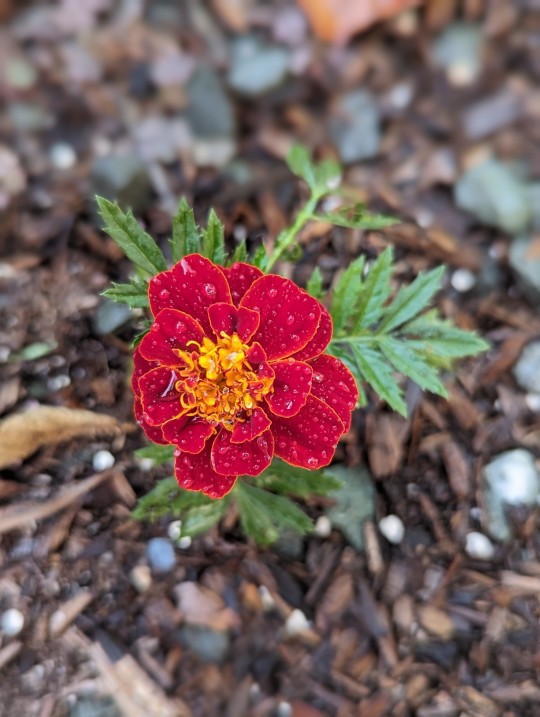
Marigold
I planted marigolds back in 2021 from the first time and I loved them. In 2022 I wanted to take a break, so decided not to plant anything, not knowing that I was going to get several free plants. I got several free cherry tomatoes, tomatillos that fruited A LOT! But I also got marigolds, many of them just sprouted and I was so happy, as they don't usually regrow in our region. It is November now, and I still got one more marigold here. 🐝 💚 🌺

#marygold#flowers of tumblr#flowers beauty#regrow#outdoor gardening#gardening101#urban gardening#gardening#gardener life#gardeners on tumblr#gardeners world#gardener#gardenerslife#plants make people happy#plants make me happy#crazy plant people#plant people#plant life#jungle plants#backyard plants#backyard garden#outside garden#outdoor garden#outdoor plants#indoor jungle#cute plants#indoor plants#talking to my plants#potted plants#amo las plantas
35 notes
·
View notes
Text
Master the Art of Growing Juicy Tomatoes: Expert Tips from Gardeners World!
Master the Art of Growing Juicy Tomatoes: Expert Tips from Gardeners World!. Are you looking to grow your own delicious tomatoes at home?
Master the Art of Growing Juicy Tomatoes
Look no further than Gardeners World! Our experts will guide you through the simple steps to success in growing your own tomato garden. Say goodbye to store-bought tomatoes and hello to fresh, juicy ones straight from your backyard. Follow our tips and techniques for a bountiful tomato harvest all season long.
Master the Art of Growing Juicy Tomatoes: Expert Tips from Gardeners World!. growing your own Master the Art of Growing Juicy Tomatoes: Expert Tips from Gardeners World!

Gardening is a popular hobby for many people, and growing tomatoes is a staple in many gardens. However, it's not always easy to know how to grow tomatoes successfully. This is where Gardeners World comes in, with helpful tips and advice for growing juicy, delicious tomatoes in your own backyard. In this blog post, we will cover 15 key subheadings that will guide you on your journey to becoming a tomato-growing expert.
The Basics of Growing Tomatoes
Tomatoes are a versatile and nutritious fruit that can be used in a variety of dishes. When it comes to growing your own tomatoes, it's important to start with the basics. Here are some essential points to keep in mind:
What type of tomato to grow
There are many different types of tomatoes, each with its own unique characteristics. Determinate tomatoes are bush-like and produce a defined amount of fruit, making them ideal for smaller gardens. Indeterminate tomatoes are vining and continue to produce fruit throughout the growing season. They are better suited for larger gardens. Consider your space and preferences when choosing which type of tomato to grow.
Where to plant tomatoes
Tomatoes need 6-8 hours of sunlight per day, so make sure to choose a spot in your garden that receives adequate sunlight. They also prefer well-drained soil that is rich in organic matter.
When to plant tomatoes
Tomatoes are warm-weather plants, so wait until all danger of frost has passed before planting. This is usually around mid to late spring. You can also start seeds indoors and transplant them outside once the weather warms up.
How to plant tomatoes
Start by digging a hole deep enough to cover the root ball of the plant Master the Art of Growing Juicy Tomatoes. Remove the lower leaves and bury the stem of the plant in the hole, leaving the top few leaves above ground. This will allow the plant to develop a strong root system. Water thoroughly after planting.
Water and Fertilizer
Tomatoes need regular watering, especially during hot and dry weather. Make sure to water at the base of the plant to avoid getting water on the leaves, as this can lead to disease. Fertilize your plants every 2-3 weeks with a balanced fertilizer to promote healthy growth.
Supporting your tomato plants
As your tomato plants grow, they will need support to keep them from falling over. You can use cages, stakes, or trellises to support your plants and keep them upright. This will also help to keep the fruit off the ground, preventing rot and disease.
Pests and diseases
Tomatoes are susceptible to pests and diseases, so it's important to stay vigilant and take preventative measures. Aphids, tomato hornworms, and tomato blight are common problems that tomato plants may face. Use natural deterrents or organic pesticides to protect your plants.
Harvesting tomatoes
Once your tomatoes are ripe, they can be harvested and enjoyed. Tomatoes are tastiest when they are allowed to ripen fully on the vine. Gently twist or cut off the fruit when it is fully red and firm. You can store ripe tomatoes at room temperature for a few days or in the refrigerator for up to a week.
Pruning tomato plants
Removing unwanted or damaged leaves and branches can help your tomato plants thrive. Prune off any foliage that is yellowing or showing signs of disease. This will promote air circulation and sunlight, leading to healthier plants and fruit.
Companion planting with tomatoes
Some plants can help to repel pests and attract beneficial insects when grown alongside tomatoes. Planting basil, marigolds, and garlic near your tomato plants can help to protect them from pests and improve their overall health.
Overwintering tomato plants
In colder climates, tomato plants will not survive the winter outdoors Master the Art of Growing Juicy Tomatoes. However, you can try to overwinter them indoors. Dig up the entire plant, including roots, and transplant it into a container. Keep the plant in a sunny spot and water regularly. With proper care, the plant may produce fruit throughout the winter.
Tomato plant diseases and how to prevent them
Tomatoes are susceptible to a variety of diseases, such as blight, wilt, and mosaic virus. Proper spacing, watering at the base of the plant, and using disease-resistant varieties can help prevent these diseases.
How to store tomato seeds
Saving seeds from your tomatoes is a cost-effective way to grow more plants in the future. To store tomato seeds, allow them to dry completely on a paper towel. Once dry, store them in a labeled envelope or container in a cool, dry place.
Tips for growing tomatoes in containers
Even if you don't have a backyard, you can still grow tomatoes in containers on a balcony or patio. Choose a larger container with good drainage and use a high-quality potting mix to provide the nutrients your plants need. Regular watering and fertilizing are essential for successful container gardening.
Common mistakes when growing tomatoes
Knowing what not to do is just as important as knowing what to do when it comes to growing tomatoes. Common mistakes include overwatering, planting too close together, and using poor quality soil. Avoid these mistakes by following the proper guidelines for growing tomatoes.
Controlling tomato pests and diseases organically
If you prefer to use organic methods in your garden Master the Art of Growing Juicy Tomatoes, there are still ways to combat pests and diseases on your tomato plants.

Beneficial insects, neem oil, and organic insecticidal soap can all be used to control pests while maintaining an organic garden.
How to preserve your tomato harvest
If you have a bountiful tomato harvest, you may not be able to eat them all fresh. Preserving your tomatoes by canning, freezing, or making sauces and salsas can help you enjoy them all year round.
Using homemade compost for healthy tomato plants
Compost is a rich, organic fertilizer that provides essential nutrients for your tomato plants. You can make your own compost using kitchen scraps and yard waste, or purchase it from a garden center. Adding compost to your soil will improve its overall health and help your tomato plants thrive.
In Conclusion
Growing tomatoes can be a rewarding and enjoyable experience. With the proper techniques and knowledge, you can produce a successful harvest of juicy, flavorful tomatoes. Follow these tips and guidelines from Gardeners World, and you'll have abundant tomato plants in no time.
FAQs
Can tomatoes be grown indoors?
Yes, tomatoes can be grown indoors as long as they receive adequate light and nutrients.
How long does it take for tomatoes to ripen?
On average, tomatoes take 60-80 days to ripen from seed to harvest.
Can I grow tomatoes in a small space?
Yes, you can grow tomatoes in containers or in a small garden space.
How do I prevent blossom end rot on tomato plants?
Blossom end rot is caused by a calcium deficiency, so adding calcium-rich amendments to your soil can help prevent it.
How often should I fertilize my tomato plants?
Tomato plants should be fertilized every 2-3 weeks during the growing season.
When is the best time to plant tomatoes?
Tomatoes should be planted after all danger of frost has passed Master the Art of Growing Juicy Tomatoes, usually in mid to late spring.
How far apart should I plant tomato plants?
Tomato plants should be spaced 24-36 inches apart to allow for proper air circulation and room for growth.
Are you looking to grow your own delicious tomatoes at home? Look no further than Gardeners World! Our experts will guide you through the simple steps to success in growing your own tomato garden. Say goodbye to store-bought tomatoes and hello to fresh, juicy ones straight from your backyard. Follow our tips and techniques for a bountiful tomato harvest all season long.. Tomatoes Master the Art of Growing Juicy Tomatoes: Expert Tips from Gardeners World!
What is the best time to plant tomatoes?
The ideal time to plant tomatoes is in the late spring, once the threat of frost has passed and the soil has warmed up. This is usually between mid-April to early May, depending on your location. Tomatoes need warm weather and plenty of sunlight to grow and produce ripe fruits.
How do I prepare the soil for growing tomatoes?
Tomatoes grow best in well-drained, nutrient-rich soil. To prepare the soil, remove any weeds and debris, then use a garden fork to loosen the soil Master the Art of Growing Juicy Tomatoes. Mix in compost or aged manure to provide nutrients. You can also add some fertilizer, such as a balanced 10-10-10 formula, to help promote plant growth.
What is the best location to grow tomatoes?
Tomatoes need at least 6-8 hours of sunlight per day to thrive, so choose a spot in your garden that receives full sun. They also need protection from strong winds, so consider planting them near a fence or wall. Additionally, make sure the soil has good drainage to prevent root rot.
How often should I water tomato plants?
Tomatoes need consistent moisture, but not too much or too little. They should be watered deeply once or twice a week, depending on the weather and the soil moisture level. Avoid getting the foliage wet to prevent the spread of diseases. Water in the morning to give the plants enough time to dry off before nightfall.
When should I start fertilizing my tomato plants?
You can start fertilizing tomato plants once they have set fruit. This is usually about a month after transplanting them into the garden. Use a fertilizer that is specifically formulated for vegetables and apply it according to the package instructions. Over-fertilizing can lead to excess leaf growth and reduced fruit production, so be careful not to overdo it.
0 notes
Photo
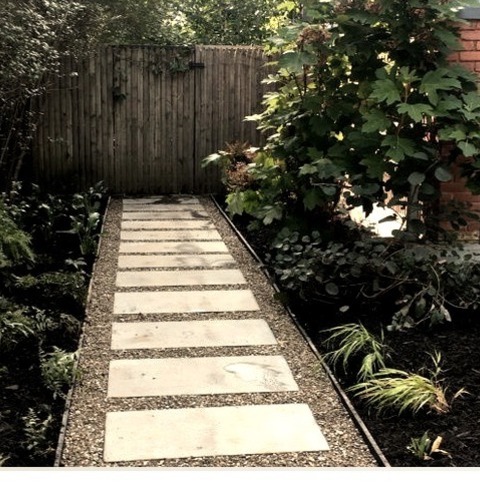
Front Yard - Modern Landscape
Image of a contemporary front yard with stone landscaping.
0 notes
Text
If people make cutesy posts about growing food and herb spirals and composting but never talk about stuff like preventing and getting rid of rats in a garden, I get this suspision that they either haven't actually gardened much or they're more interested in presenting an aesthetically pleasing image than in actually preparing people to deal with a garden.
#Like the unrealistic gun hoarding bunker doomsday preppers of gardening#but instead of imagining a world without rules and community they imagine a world without rats and mold and plant virusses#Which is a better worldview than those preppers but not a more realistic one.
5K notes
·
View notes
Text

More cartoons!
check ou my shop!
#otgw#over the garden wall#regular show#adventure time#steven universe#we bare bears#craig of the creek#the amazing world of gumball#my art
5K notes
·
View notes
Text
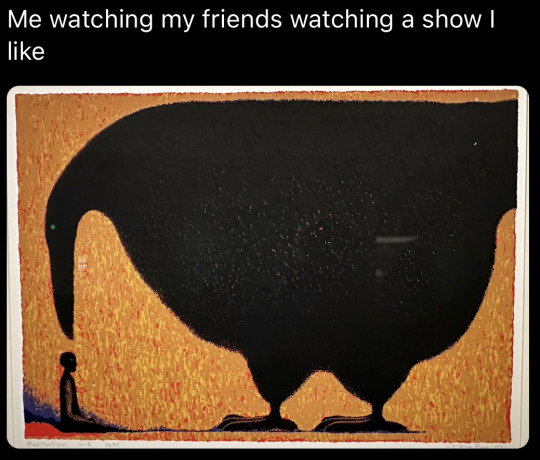
Meditation by Yoong Bae
#star trek#star wars#merlin#atlantis#noragami#the letter for the king#altered carbon#over the garden wall#the power#our flag means death#raised by wolves#the last of us#killing eve#the bear#arcane#miracle workers#black mirror#love death + robots#marco polo#the midnight gospel#blue eye samurai#voltron#intergalactic#natsume yuujinchou#steven universe#my memes#alien worlds#gen v#avatar#interview with the vampire
3K notes
·
View notes
Text
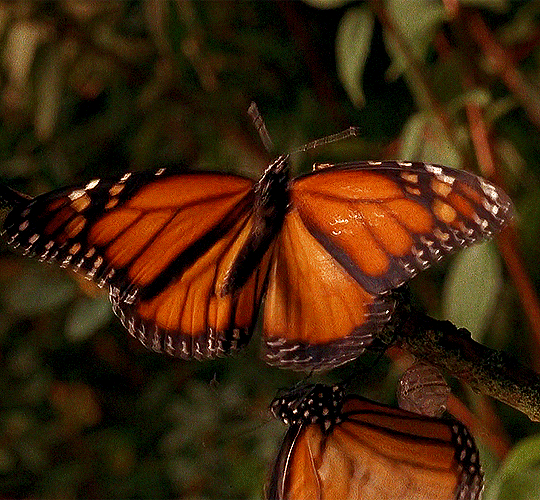




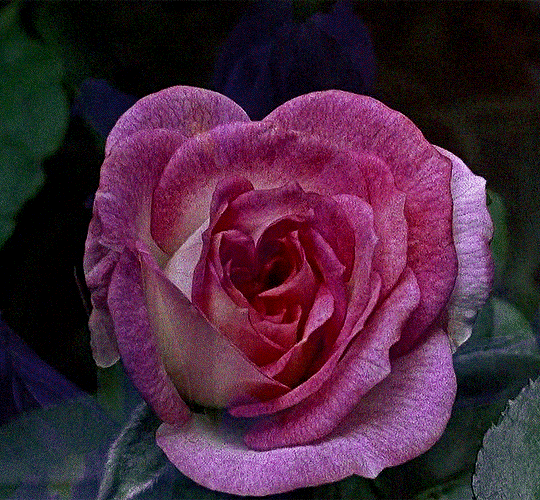
The Secret Garden
1993, dir. Agnieszka Holland
#the secret garden#usersugar#underbetelgeuse#usersameera#filmgifs#moviegifs#films#*#tsg*#filmedit#literally crying. there is so much beauty in the world its easy to forget
1K notes
·
View notes
Text


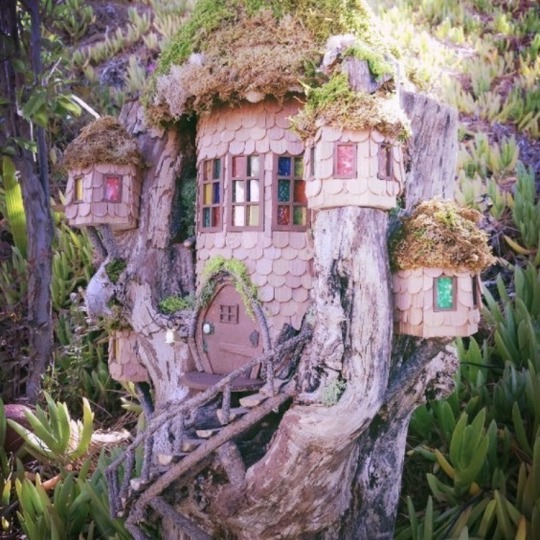


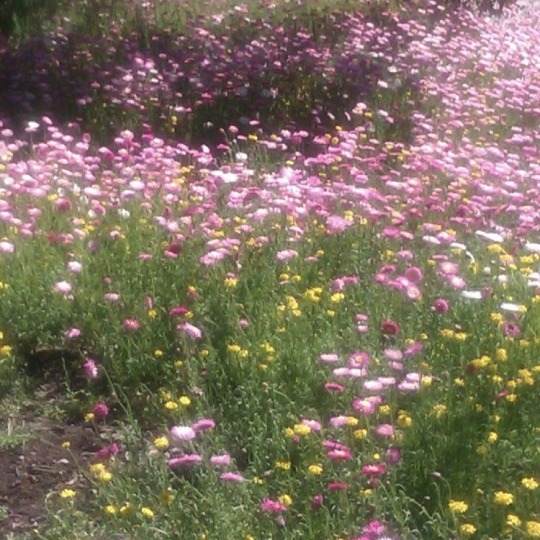
𝘭𝘦𝘵’𝘴 𝘦𝘴𝘤𝘢𝘱𝘦 𝘪𝘯𝘵𝘰 𝘵𝘩𝘦 𝘸𝘰𝘳𝘭𝘥 𝘰𝘧 𝘵𝘩𝘦 𝘧𝘢𝘦𝘳𝘪𝘦𝘴
#I mean….#escapism much?#I’ll bring moffe if you bring your pet(s)#and if u don’t have one they’ll appear when you get there#little faerie pets#it is a faerie world after all#cottagecore#nature#naturecore#flowers#flowercore#warmcore#fairy#fairycore#fairy aesthetic#pink aesthetic#fairy house#garden#cozycore#cosycore#farmcore#wildflowers#cute#for those thinking these are AI images - they are not (yipppeee!!)#just heavily edited and out of this world beautiful so they loook unreal!
7K notes
·
View notes
Text
Prompt 279
Now Danny didn’t mean to make a Bootube channel. He’d meant to send that sleep deprived ramble to Tucker, but he had clicked on the wrong app and yeah. Apparently people enjoy his space rambles- or it could have been the ghost blob-cats that had decided to flop onto him. (Honestly he wasn’t surprised they would start to mimic the shapes of things in their surroundings)
Tucker? Found it hilarious, as did Sam and Val and… um, okay this has become their shared channel now, nice. Though there are some strange comments on some of the videos. Really, what do they mean green sky and crazy tech???
#Prompts#Danny Phantom#Tucker does coding stuff & how to fix design flaws in everyday technology#Sam has a gardening & eco-awareness playlist#Valerie has stuff with All Sorts of Weapons & a mini blog of Cujo#Danny does Space stuff and he loves it#Everyone is freaking out because the videos aren’t only showing up in their world but other ones too#Also all of them are revealing a bunch of stuff that Humanity Doesn’t Know Yet#Thank you weird time stuff of the Zone#Space Core Danny#Life Core Sam#Storm Core Tucker#Metal Core Val#Are they roommates or together who knows#Ellie shows up in the background sometimes too#They do a lot of stuff in the background of each others videos#Including their food fighting#DCxDP#DPxDC#DP x Marvel#DPxBHA#Danny Phantom Crossover#Do as Many Crossovers as you Want
867 notes
·
View notes
Text
It's the small amazing natural things that make me feel so much happiness! 💚 When I heard them singing all together, I was so excited!
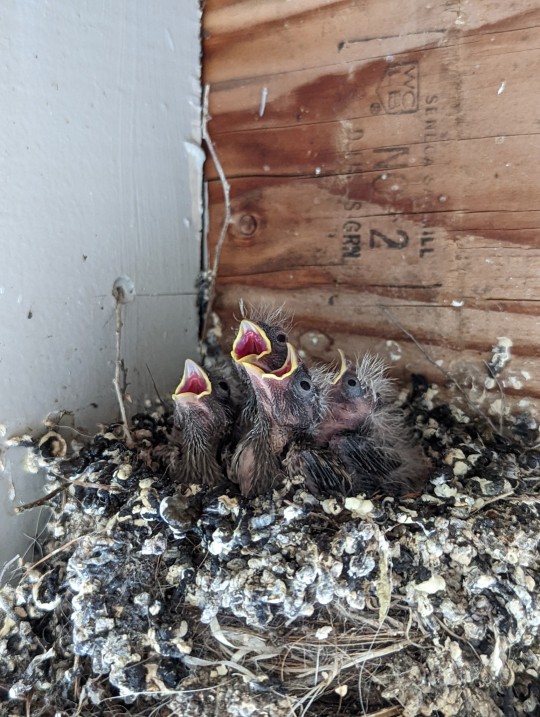

The nest is also awesome! How in the world did she build it so cushy and cozy?

#outdoor gardening#gardener life#gardeners on tumblr#gardeners world#gardener#baby bird#birdsong#birds#nature#life cycle#indoor jungle#cute plants#indoor plants#talking to my plants#potted plants#amo las plantas#house plants#houseplants#house jungle#houseplants club#amazing#happy at home#gardening makes me happy#backyard garden#backyard#bird nest#nest#baby animals#gay positivity
15 notes
·
View notes
Text
Uncle Sam had a green thumb? Digging into the history of victory gardens 🍅🌽🥕

Victory Gardens emerged during World War I as a way to ease the strain on the nation's food supply and foster solidarity among citizens.

Citizens were encouraged to grow their own fruits and vegetables to ensure a steady food supply for both the home front and the troops fighting overseas.
The movement continued during World War II, when the United States faced severe food shortages due to rationing and the need to support a growing military force.

Victory Gardens became a symbol of community, patriotism and self-sufficiency, and by 1944, an estimated 20 million gardens were cultivated across the nation.

The U.S. government heavily promoted the Victory Garden movement through various initiatives and campaigns. The Department of Agriculture's Extension Service provided guidance and resources, such as instructional pamphlets on gardening techniques, to help citizens establish and maintain their gardens and plots.

The government also created a range of promotional materials, including posters, films, and radio programs, to encourage citizens to participate in the effort.
Further Reading:
3K notes
·
View notes
Text
the mighty nein - critical role
this is a place where i don't feel alone.
this is a place where i feel at home.
#also with softer vibes. i offer They#every silly little brainheart found family deserves a to build a home edit#the mighty nein maybe most of all. thats my family#also the lyrics deliciously well suited to m9.#when jester pulls that. stupid tarot card for fjord. home or traveler. and there's a carnival wagon. and veth says Thats Us! . them#i just think about . the tower is their home the xhorhouse is their home the lavish chateau is their home the balleater. the mistake.#the nein heroez. veth and yezas apartment. the dome. fjord and jesters living room floor.#a bar with a silly name on rumblecusp#also like. the song has stone and dust imagery. gardens and trees.#the inherent temporality of life and love and how that holds no bearing on how greatly people can love. im losin it okay.#ive been making this edit for days straight with my computer screaming at me for trying to shove 143 episodes of cr into a 2min20sec video.#crying becuase. theyre a family do you get it. they were nine lonely people and most of them had given up on seeing their own lives#as something that might be good. something that might make the world a better place. and in the end they're heroes.#and it doesn't matter if no one else knows because They know they're heroes. and they wouldn't've believed that was true when they met.#rattling the bars of my enclosure. to be loved is to be changed#posted on twitter and want to get in the habit of posting here too bc.#general reasons but also bc . i have noticed some of the ppl liking/sharing it are also ppl who shit on my ops by vaguing about my posts#which is in general whatever but does leave a funny taste in my mouth.#critical role#the mighty nein#cr2#caleb widogast#caduceus clay#jester lavorre#fjord#veth brenatto#yasha nydoorin#beauregard lionett#mollymauk tealeaf#my posts
2K notes
·
View notes
Text
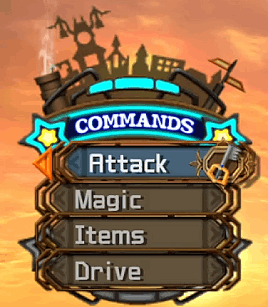

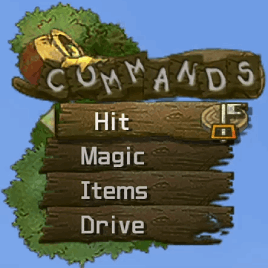


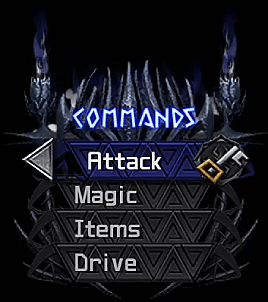
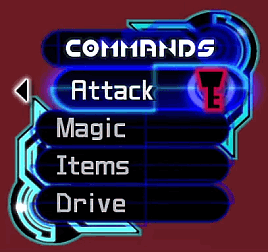



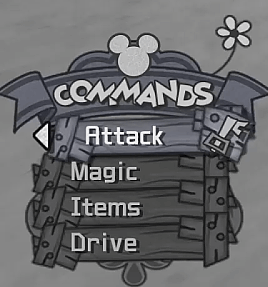





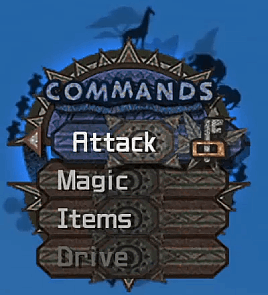
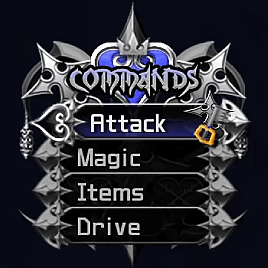
#kingdom hearts 2#kh2#my gif#i'm aware these aren't all of the command menus in the game. i limited them to ones that represent the general world as a whole#otherwise this post would be really long and would take a lot more work#i'm a big fan of how they make assets that are designed specifically for a certain world or area#they're cool to look at and i never really took the time to stop and appreciate all the details#some even have little animations when you expand the menus#as well as hidden mickeys#very cool stuff#okay time to tag all these worlds...#twilight town#hollow bastion#radiant garden#100 acre wood#mysterious tower#olympus coliseum#underworld#space paranoids#land of dragons#beast's castle#disney castle#timeless river#atlantica#port royal#halloween town#christmas town#agrabah#pride lands#the world that never was
7K notes
·
View notes
Text
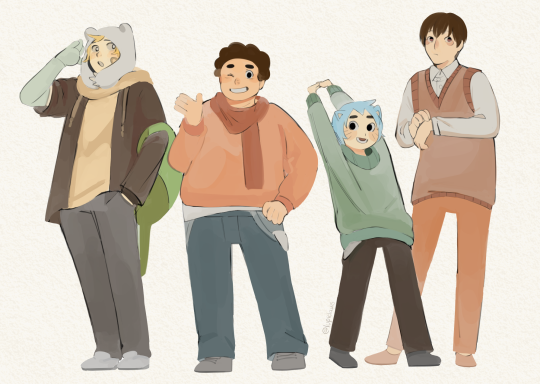
Quick doodle trying to update a really old artstyle of mine (with CN boys)
#cartoon network#at#adventure time#hora de aventura#steven universe#the amazing world of gumball#over the garden wall#finn the human#finn mertens#gumball watterson#wirt#crossover#my art
544 notes
·
View notes
Text
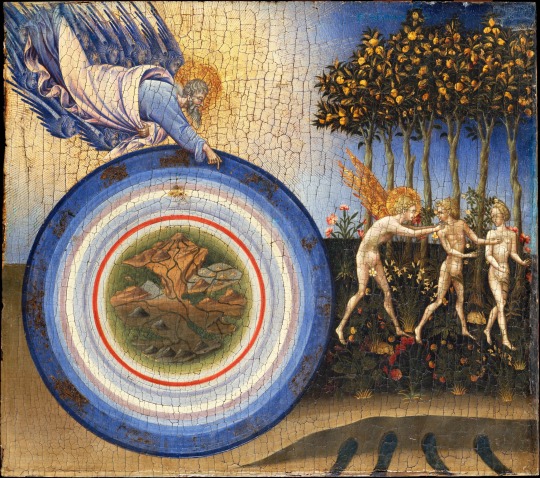
The Creation of the World and the Expulsion from Paradise
by Giovanni di Paolo
#giovanni di paolo#art#god#creation#world#earth#adam and eve#adam#eve#paradise#garden of eden#eden#religious art#angel#angels#terrestrial paradise#earthly paradise#celestial#genesis#religion#christianity#christian#religious#bible#biblical#renaissance
520 notes
·
View notes
Text
so many of us haven't seen it
we don't encounter it, we can't imagine it, we can't get out of the tomb of apathy because we haven't seen the wonders just beyond their line of sight
I talk about this all the time, but it's because I think about it all the time
There are likely thousands of plants native to the area you live in, and chances are you have never even seen most of them, in your entire life.
Not even rare orchids that only bloom at midnight on a blood moon or some shit—regular flowers. Weeds. They have been systematically eliminated from every single place you ever set foot in, and you have to have a special hobby or line of work to ever even rest your eyes upon the flowers that used to bloom for no one on every hill, or in every valley, or beside every stream
There are a few hundred birds that live where I live. I have never seen most of them before. I have never seen a Kentucky Warbler, and I have lived in Kentucky for what...twenty years?
I have never seen a rosy maple moth. When I saw one on the internet, I didn't even think it was real.
I've become a deeply weird person over the past couple years. Tasting even a little bit of the Wonders changes you. I wouldn't have thought blue bees were real, or the fantastically rainbow-colored dogbane beetles.
I have seen the world beyond the wasteland, and that glimpse makes you crazy.
You or I may have never seen a truly mature tree. A fraction of a percent of the old growth forest of the Eastern USA remains. Once there were tulip poplars over 6 feet in diameter and sycamores well over 10 feet in diameter. Only a few remain, in secret locations. Imagine walking through a forest where the tree trunks are over 3-4 feet wide.
The forest where I work is 100 years old. That's a baby forest.
Knowing that, being aware of that, it's maddening.
Central Kentucky has disproportionately few endemic plants. Almost none. Central Kentucky was the first area west of the Appalachians settled by European colonizers. The Bluegrass was once described as having the most peculiar plant life anywhere in the East, but now, there are no species known that are unique to that area.
Colonization destroyed the canebrakes. (Did you know that we had vast forests of bamboo full of carnivorous plants?) The bamboo is barely hanging on. It destroyed the sycamores so enormous you could use the hollow center of one as a stable for animals. It introduced invasive grasses to feed cattle and horses. It destroyed the rich lush topsoil. Most of the ancient oaks were cut down or died when housing developments were built on top of their roots.
What happened to the endemic species, never recorded in books of herbs, never sketched by a European naturalist.
Either gone forever...or hiding in a sinkhole on a backroad somewhere, not even yet discovered.
So much has been lost for eternity. So much still could be lost.
Some days it's hard not to wail and scream. There are herbicides in your drinking water. When you spread honey on toast, you likely also spread neonicotinoid pesticides, which testing has confirmed to be present in something like 45% of honey. In many areas, insects are immersed in the presence of chemicals designed to kill them in every drop of water, every leaf, every square inch of soil.
When games, animations, and illustrations envision the outdoors, they cover the ground with a short, uniform carpet of green, because that is what we see, no matter where we go: turfgrass cut by a lawn mower. Where I live, there are no natural environments that resemble this, remotely. The closest thing we have to turf-forming grass is our wealth of native sedges, most of which are rare or endangered.
I talked to a man who had devoted his life to studying the American bamboo, Arundinaria gigantea, and he had never seen a canebrake larger than 200x500 feet. Canebrakes once covered ten million acres, and now the bamboo exists in short, straggly clumps instead of dense bamboo forests up to 40 feet tall.
I want to cry and scream. The grief will tear me to pieces. I live in a post-apocalyptic wasteland, surrounded by people who can't even grieve, because they have been so completely severed from everything that was lost that they don't even know it was real.
It hurts. It hurts, and we have to live with it. It hurts, and the grief is all-consuming.
There is the agony, and there are the Wonders. Both are true at the same time. It is because nothing around us is standing still; everything in nature is always moving, iterating, becoming. Something is pulling and nudging at our species, urging us to move, to iterate, to become.
So much has been lost. Even more is not lost.
The trees, the bamboo, the sedges, the Kentucky warblers and rosy maple moths.
They are not lost. We are lost.
This is the hard part. The grief is hard, but this is somehow harder for us. We are lost, and it is time to come home.
Not to a physical place, but to a way of living: interconnected, mutualistic, interdependent. Symbiosis. In the forest, no one is separate from anyone else, everyone is linked and dependent on the community. Trees help each other, they support each other, they protect and shelter and feed one another and all living things, and together they are a forest. I don't really consider myself religious, but I have to reserve something in my head for how it felt to realize what Forest was.
When I noticed the little plants popping up in the sidewalk cracks and gravel paths, the tough weeds holding on in the lawns and pavement, something in my brain began to change dramatically and permanently.
They're still here. The trees. Even in the pavement and lawns. The dandelions have come, adapting rapidly, helping the bees hold on. The wildflower seeds are still sprouting in this depleted ground. Waiting for us to recognize them. Life is everywhere. The Forest is everywhere. It felt like they were waiting. We're here. We have not abandoned you. We are resilience, persistence, survival, adaptation. This is not death. This is Chaos. Come home. Come home. Come home.
I saved little plants from the roadside and tended them in plastic cups. I didn't think it would work. I don't know why I tried. I was acting as something bigger than only myself, responding to a call that moves throughout all of nature. But they survived, and growing and tending to my little plants and trees, I—understood.
I don't know if I believe in God, but I believe in Something, whatever it was that seemed to whisper like a secret: Welcome home, Caretaker.
And honestly, truth shone through then from relics of religion I hadn't touched in ages; God put Adam in a garden, not a suburb, a mall, or a Walmart. This is who you are. Not a Consumer, but a Caretaker.
And when the threat of the Flood loomed, God told Noah to start building a fucking boat.
In ecology, the plants we know as "weeds" are pioneer species: the first species to return to an area after a natural disaster or mass extinction. They survive in the harshest conditions, and prepare the land for regeneration. This is who you must become.
Look to the Dandelion—in just a few hundred years on this continent, Dandelion has risen to the highest calling of a Weed: first survive where the others can't, and then help the others survive. If the human species is to survive, you must be a weed species. You must adapt relentlessly, resist eradication, and protect and nurture other life forms by your very nature. You must be tough as nails, and make the world a gentler place through your survival.
Have you heard the saying that grief is love with no place to go?
That's the hard part.
We must grieve, but it is not yet time to grieve. It is time to love.
2K notes
·
View notes